This post may contain references or links to products from one or more partners of our parent company and/or subsidiaries of our parent company. For more information, visit this page.
July 8, 2020
Are you pine-curious? We don’t blame you. Pine flooring is a classic, timeless flooring choice. In fact, pine floors date back all the way to Colonial America, when early colonists used wide-cut pine boards to cover their floors. These floors were made up of regional pine species—Eastern white pine and pumpkin pine in the Northeast, and longleaf pine in the South.
Today, most pine floors in the US are made of white pine, although some older homes do feature amazing pumpkin pine floors. And while pine is a softwood rather than a hardwood (like oak or maple), it’s still a durable and practical choice for home flooring.
But: is pine right for your home? Below, we’ll help you decide by going through all the pros and cons of pine flooring. We’ll talk about price, maintenance, durability, and more. We’ll even talk about some pine flooring alternatives too!
The Pros of Pine Flooring
As with other types of wood flooring, there are a lot of advantages to pine flooring. Let’s jump in!
Properly maintained pine flooring will last (basically) forever
What’s perhaps most remarkable about pine floors is how long they can survive. As is the case with other wood surfaces, a properly maintained solid pine floor can last for generations.
Plus, pine flooring is particularly easy to refinish because it’s so soft, you can sand it with ease. That means you can even do spot treatments if you find yourself needing them, although you may want to hire a professional to ensure that the finish is blended seamlessly.
Just remember: like most wood flooring, pine can be purchased as a solid or engineered product. And while solid wood can be sanded down and refinished almost indefinitely, one of the biggest disadvantages of engineered wood is that it sometimes can’t be refinished at all. And even the best engineered wood flooring can only be sanded down and refinished a few times at most.
That said, the initial cost to install engineered hardwood floors is often less expensive than the cost to install solid wood floors. And that’s because engineered products are more commonly sold as click-together flooring, which makes installation a snap. Trade-offs!
Pine flooring is beautiful
Pine is often thought of as one of the most beautiful types of wood flooring. And we couldn’t agree more! Plus, you can choose between standard pine or knotty pine, which gives you an entirely different aesthetic.
If you aren’t familiar with knotty pine, it’s a lovely pine variant that (no surprise) exposes pine’s natural, knotty look—giving you a rustic, natural feel. Your biggest choice will be deciding which type of pine you want!
Pine is a sustainable softwood
Pine is a plentiful, comparatively sustainable wood. It’s hardy, it’s resilient, and it grows very quickly. There are over 100 different species of pine trees, and they’re primarily found in the Northern Hemisphere. Plus, pine trees are ubiquitous throughout the United States, so sourcing this type of wood is pretty simple. You don’t have to worry about the carbon footprint involved in shipping your floors from across the world!
Pine flooring is easy on your budget
If you’ve been put off by the cost of buying hardwood flooring, pine may be an excellent choice for you. Pine flooring is often less expensive than hardwood, but nevertheless gives you the benefits of a wood floor that will bring joy for years to come. In other words, the benefits of a wood floor—without the wood flooring cost!
Pine flooring is customizable
One of the coolest parts of pine flooring is that you can finish it to fit your taste. Pine flooring is often sold unfinished, which means that you can stain it, paint it, or create your own awesome wood floor designs. Make it look the way you want, and if you want a change in a few years, just sand it down and begin again!
Best Brands of 2024
The Cons of Pine Flooring
The perfect types of flooring for your home depend on what you need those flooring options to do. After all, you wouldn’t compare the merits of carpet vs. laminate if you needed outdoor flooring options, would you? Of course not!
The same goes for pine flooring. It’s amazing at what it does, but it does best in certain environments. So remember: while you’re reading about these disadvantages, keep in mind that most (or all) of them can be remedied simply by using pine in the appropriate setting.
Pine flooring is particularly susceptible to wear
Pine is certainly among the nicest wood flooring types, but it isn’t hardwood. It’s a softwood, which means that it’s susceptible to dents, scratches, and divots from heavy use by people and pets.
That said, even if pine flooring isn’t the best wood flooring for dogs, a particularly water-resistant wood flooring, or even the most practical sunroom flooring choice, it can be sanded and refinished over and over again.
Plus, by placing pine in a less-traffic-heavy part of your home—a bedroom, for instance—you can significantly cut down on wear and tear.
New pine floors often need finishing
Remember how we said that pine flooring often comes unfinished? That’s an advantage and a possible disadvantage. The advantage is that you can finish it however you want. The disadvantage is that when you install pine flooring, you might have an extra step.
Regular maintenance is necessary
Pine flooring will need to be maintained. Every few years, you’ll want to strip the finish, sand out any blemishes, and apply a new finish coat. The upside of this maintenance is that you get a floor that looks like new again. Have some deep stains? Remember that you can also bleach wooden floors!
Pine-Adjacent Flooring
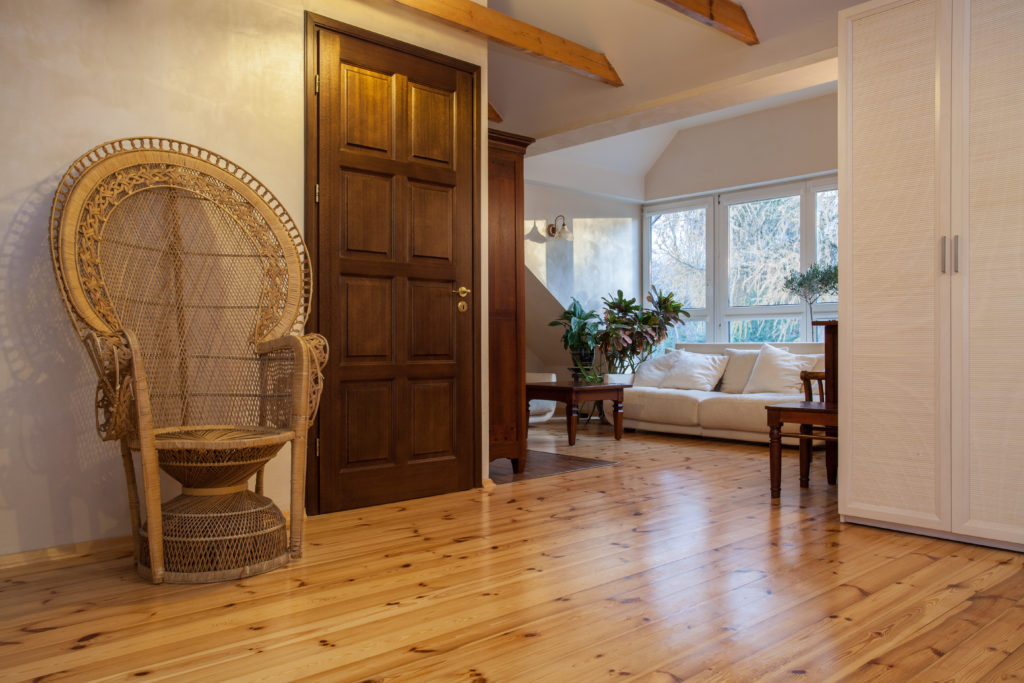
Not sold on pine flooring, but love the way it looks? There are a lot of pine-adjacent wood species and fake wood flooring options that can give you the look of pine, without its disadvantages. Let’s take a look!
Hardwood
If the softness of pine flooring is an issue for you, consider picking a hardwood instead. All of the most durable types of wood flooring are hardwoods, and it’s easy to find hardwood species that look similar to pine.
In fact, some of the best hardwood floors like knotty cherry and hickory are really hard to distinguish from pine once they’re installed. Our advice? Find a flooring retailer near you to talk it over with. They can point you towards pine-look surfaces made by the best hardwood floor brands.
Laminate
What is laminate flooring? It’s a hard, durable, composite material that can mimic the appearance of just about any type of flooring—including pine! Like engineered wood, you can often install laminate as a click-together “floating floor” for ease of installation. So if you need a scratch-resistant flooring option that’s affordable and easy to maintain, you should check it out!
Fun fact: many laminate products now come with built-in underlayment to do away with the traditional disadvantages of floating floors. Could laminate flooring be any more awesome?
LVT / Vinyl Plank
Whether you call it LVT, vinyl plank, or vinyl tile, this product is one of the best types of vinyl flooring you can buy. Vinyl plank is made of synthetic materials, making it durable, easy to install, and incredibly versatile.
Like laminate, LVT can mimic the appearance of nearly any type of wood flooring. But unlike laminate, it can also mimic the texture and feel as well! Thanks to its strength, beauty, and value, it has become one of America’s most popular hardwood floor alternatives in recent years.
Vinyl plank makes for excellent living room, bedroom, or even mudroom flooring—and it’s some of the easiest flooring to install, too. You just can’t beat that.
Wood-Look Concrete
Concrete flooring is both a new and old choice. It’s been around a long time, although most frequently, it has been used for outdoor or industrial applications. Today, concrete is making its way inside the home, with concrete sinks, countertops, and even concrete flooring that looks like wood. Seriously!
And it’s easier than you think. Concrete can be textured and colored in any number of ways to look just like wood, including—you guessed it—pine!
Cork
In our opinion, some of the best cork flooring options are the ones that don’t even look like cork. These days, lots of cork flooring varieties are made to look like marble, granite, and even pine.
Plus, if you check out the pros and cons of cork flooring, you might be surprised to find out how awesome cork is. Forget the low-quality cork flooring Lowes sells—this stuff really is worth your consideration!
Bamboo
Bamboo is another excellent option. Many of the best bamboo flooring products come in a wide variety of finishes, including ones that look like pine flooring. Bamboo is super strong and durable—in fact, if you stack up bamboo flooring vs. laminate, you’ll find they’re very similar (even though laminate is protected by a hard plastic wear layer). That’s what we call tough!
Wood-Look Tile
These days, there are nearly endless types of tile to choose from—including one of the coolest products on the market: wood-look tile! This is tile that’s made to resemble wood (no surprise there). And once it’s installed, it’s almost impossible to tell the difference.
If you’ve been comparing the pros and cons of tile vs. laminate or tile vs. wood floors, you can stop—wood-look tile gives you the best of all worlds!
Besides, now that snap-together tile flooring is really coming into its own, you can install tile that looks like pine with minimal hassle. If you’re the type of person that has to ask “what is subflooring” before starting on a do-it-yourself flooring project (and if so, we sympathize), this might be a great choice for you.
Peel-and-stick Tiles & Planks
Peel-and-stick carpet tiles have been getting more and more popular recently, and for good reason. The instructions for “how to install carpet tiles” couldn’t be easier—just peel and stick! But carpet tiles aren’t the only peel-and-stick flooring you can buy at Home Depot. These days, peel-and-stick tiles and planks are appearing in all sorts of finishes, including pine.
Plus, these products can be installed over just about anything. So if the cost to replace carpet with hardwood is a little too steep for you right now, consider putting down some peel-and-stick pine planks first.
Ready to Buy Some Pine Flooring?
We hope these pros and cons of pine flooring were helpful! Now, if you’re ready to buy some pine flooring (or a pine alternative) of your very own, do it the right way—by finding a nearby flooring store to help you out. They’re the real experts!
Need a little more info on flooring before you buy? Check out:
- Pergo and Pergo Extreme Reviews: What Buyers are Saying
- How to Replace Flooring: 8 Excellent Ideas
- Laminate vs. Hardwood Floors: Which are Better?
- Engineered Bamboo Flooring: Pros and Cons
- 9 Reasons The “Carpet vs. Hardwood” Debate is Silly
- How to Install Hardwood Floors: A Step-by-Step Guide
- Linoleum vs. Laminate vs. Vinyl: Differences, Pros, & Cons
- Heating Wood Floors 101: Everything You Need to Know
About The Author

Dr. Sara Austin
July 8, 2020
Best known for being “not that kind of doctor” and never knowing which fork to use, Sara is a learning designer and writer, former real estate agent, and builder with a penchant for home design and remodeling.
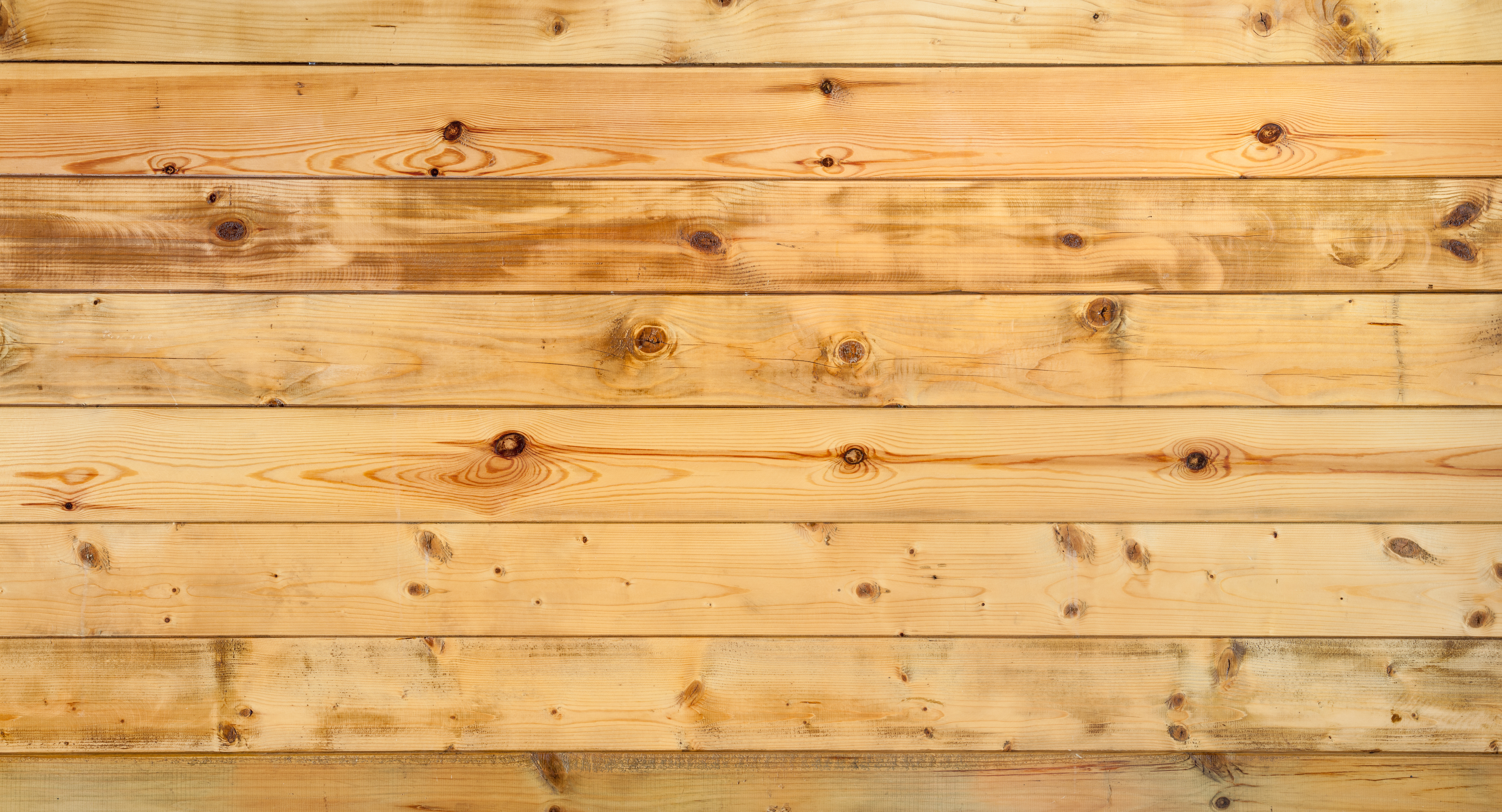
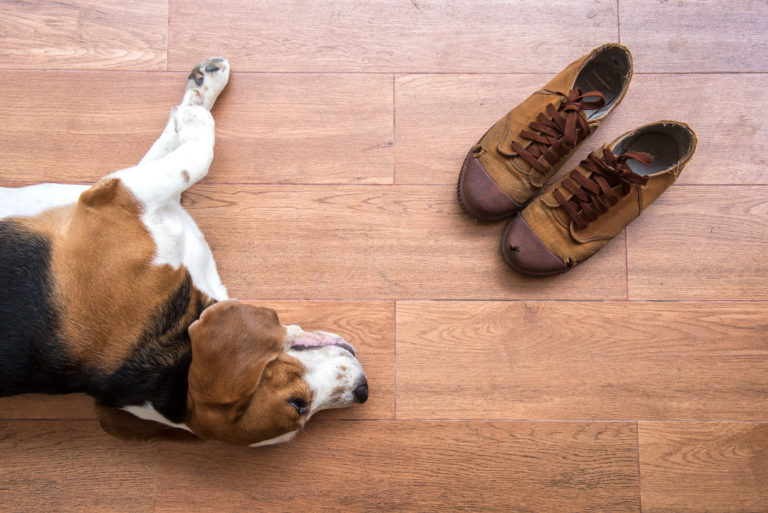
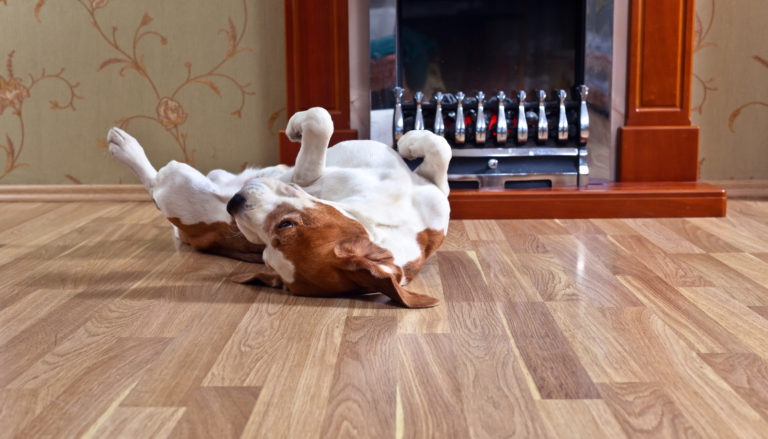

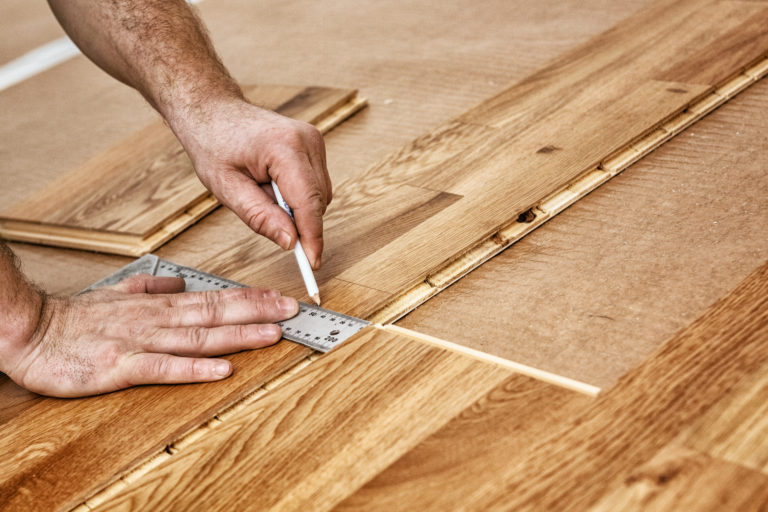

1 comment
Afton Jackson
I really liked how you talked about the beauty and customizability of pinewood flooring. Wood has always been my favorite material to work with, so if I can get a floor pattern that’s exactly the way I want it, I can be truly satisfied with the way my house works. I’ll make sure I search for pinewood when I start shopping around for hardwood flooring.